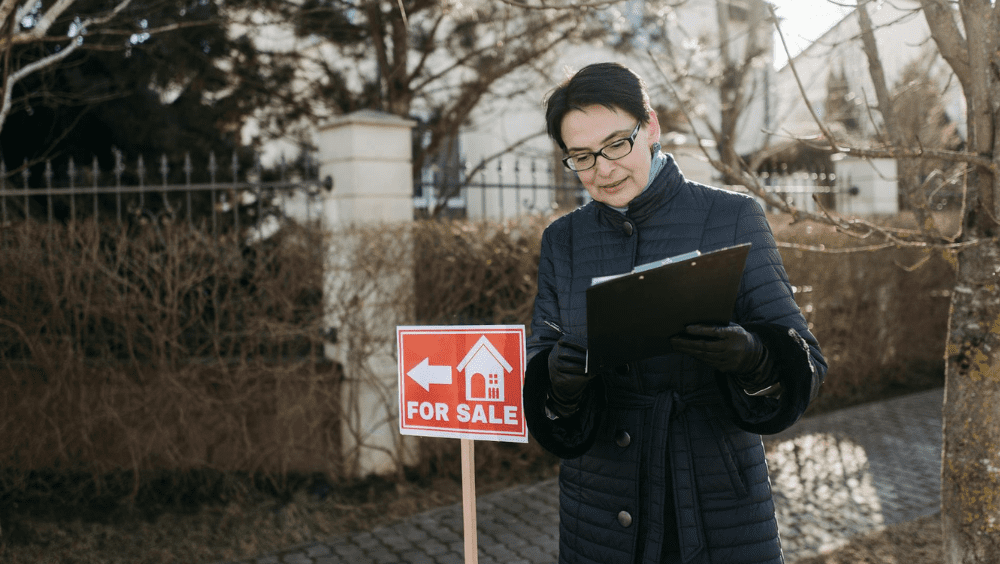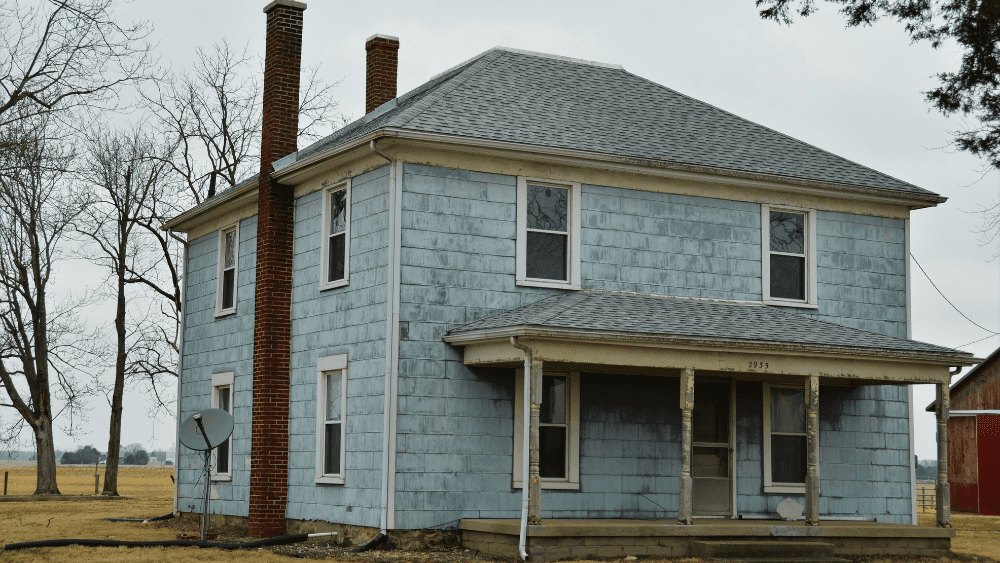
Here’s a crazy idea, new homeowner: Before you get fully settled into the house you just purchased, take a look at the floors. Are they mismatched? Dated? Grungy? Banged up? If so, now’s a great time to invest in some fresh flooring. “It’s better to knock out all of the flooring replacement at once,” says Jennifer King, a top-selling real estate agent in Ephrata, Pennsylvania. “One of the huge trends that’s changed in my years in the business is that everybody wants all the flooring the same, everybody wants the model home experience.” Once you go on that furniture shopping spree and fill up your rooms with big tables, dressers, couches, and bed frames, this upgrade becomes a much bigger pain than it needs to be. Right now, you’ve got the luxury of working with a blank canvas. With so many materials, colors, and finishes to choose from (not to mention price points ranging from $3 to $18 per square foot!) we’re here to help you narrow down your options based on which flooring types add the most value and work best for your house. You’ll need to repair, level, or remove your existing flooring before you can install your new material. The time and cost it takes to remove the existing flooring will impact your total installation costs. Different flooring types take longer to install than others, which means more time before your house is ready to move in. For example, if you opt for ceramic tile, there will be a 24-hour waiting period in between installation and grouting. Solid hardwood floors require acclimation on site before installation. The size and shapes of your rooms will also impact the installation timeline. If your rooms are straightforward boxes, installation is relatively simple. But if your home has lots of nooks, crannies or complicated architecture (like curved walls or stairs) that require specialty cuts, expect the installation to take longer and cost more. “Your home’s price point plays a role in which flooring type will add the most value,” explains King. “In our area, vinyl or laminate flooring is fine for homes at the median value or below. In higher value homes, buyers expect to see hardwood, stone tile, or luxury vinyl plank.” The flooring you choose needs to be on par with the value of your home. In fact, the value can actually decrease if you install high-end flooring like marble in a mid-range home, so choose wisely—preferably based on the advice of a real estate professional. There’s no end to the number of creative flooring options out there, so we’ve whittled it down to 12 amazing options to consider for your home. You just can’t go wrong with a classic. The polished hardwood floors so popular in American homes today started being produced in mass as early as the late 1800s and have stood the test of time. According to HomeLight’s Top Agent Insights Survey for Q1 2019, installing new wood floors costs $4,338 on average, but will boost your home value by $6,555 for a 51% ROI. Wood floors are also durable, easy to clean, and retain their value over a longer time period than other flooring types (like carpet). It is true that wood flooring is prone to scratches, dings or chips, and the material is vulnerable to water damage — however, you can avoid these issues with proper care and maintenance. In this day and age, almost anything can be made to look like wood flooring, but solid hardwood is the only genuine article. A floor can only be called “real wood” if it’s made from a solid piece of wood from top to bottom — no layering. (We’ll cover engineered hardwood next). Take your pick from a wide variety of species each with its own unique hue and grain pattern, including oak, hickory, maple, and heart pine. Why you’ll love it: Where to put hardwood: Living rooms, bedrooms, hallways, dining rooms Examples of what to buy: Beartooth Mountain Oak from Lumber LiquidatorsPrestige Natural Maple from Home DepotAmerican Spirit Molasses Hickory from Floor and Decor Average costs: $3 to $14 per square foot depending on species, cut, and finish Engineered hardwood floors are also made from real wood, but they’re comprised of layers with only the top layer, or veneer, being cut from a top quality, solid hardwood like oak, or maple. “Engineered wood has become popular because it’s more affordable than hardwood. It will add value to your home as long as it’s kept in good condition,” says King. Aside from affordability, the biggest benefit of engineered wood is that it expands and contracts less than solid hardwood, making it ideal for basements. Why you’ll love it: Where to put engineered wood: Throughout the whole house, including bathrooms, kitchens, and basements (Note: engineered wood will need extra maintenance to keep them in good condition in areas prone to dampness). Examples of what to buy: Hydropel Oak Medium Gray from Home DepotAutumn Hickory from LowesAquaGuard Light Brown Walnut from Floor and Decor Average costs: $3 to $13 per square foot Laminate flooring isn’t actually a wood floor at all — but it’s a great way to get the look of wood floors without the expense or hassle of installing real wood. It’s a multi-layer flooring made up of an attached foam padding, high-density fiberboard, decorative wood grain paper, and a protective overlay. “Laminate flooring is tricky because some of it looks really good and some doesn’t. You can get away with a good looking laminate in a median-priced home,” advises King. “Some buyers do prefer laminate flooring because it’s sturdier, easier to care for, and less prone to damage than hardwood or engineered wood.” Why you’ll love it: Where to put it: Living rooms, bedrooms, dining rooms, hallways Examples of what to buy: Park Rapids Oak from Home DepotHeritage Walnut from Lumber LiquidatorsPeruvian Gingerwood from Build Direct Average costs: $.70 to $2 per square foot Once upon a time wall-to-wall carpet was all the rage, but these days carpet is on the way out the door. “Overall, carpet definitely has a shorter lifespan, and more people are moving away from carpeting because of allergies, germs, and the difficulty of cleaning it,” says King. Still, carpet is a popular option, especially in areas with cold winters, because it acts as a layer of insulation. Carpet is a multi-faceted flooring that comes in variations such as grade, textile, installation type, or pile. Builder-grade is a catchall category for low-end building materials, including carpets. This carpet type is typically made from inexpensive, synthetic materials, like polyester, or olefin. “You might be able to get away with builder-grade carpet in the family room or bonus room if you do really good padding. But builder-grade does stain more easily than higher quality carpets,” says King. Why you’ll love it: Where to put it: Family rooms, rumpus rooms, playrooms Examples of what to buy: Gemini I-Color Stoneworks Polyester from Home DepotShaw Lancaster Olefin Berber from LowesCrestline Needlebond recycled plastic polyester from Lowes Average costs: $.50 to $3 per square foot Loop pile carpeting features uncut yarn with both ends connected to the carpet backing. Tightly looped pile is resistant to crushing and lines, making it one of the most durable carpet options. Why you’ll love it: Where to put it: Game rooms, family rooms, offices, and other high-traffic areas Examples of what to buy: Durango Oyster from Shaw FloorsEntanglement Desert/Ivory from Home DepotActive Family Rave Review from Lowes Average costs: $1 to $5 per square foot True to its name, cut pile carpet is sheared to the same length and tufted, leaving the top ends of the fibers exposed. This makes for a plusher carpet in both appearance and feel—which is why it’s the most popular carpet type. Cut pile has four main subtype weaves, which impacts its look, feel, and durability. They are: Saxony or plush, textured Saxony, Frieze, and Cable. Plush Saxony and Cable are the softest and least durable, but they can last 5 to 10 years in low-traffic areas. Textured Saxony can withstand medium-traffic areas, while the tightly twisted weave of frieze is best for high-traffic areas. Why you’ll love it: Where to put it: Living rooms, bedrooms, dens, TV rooms Examples of what to buy: Sense of Reflection Smoked Pearl from Shaw FloorsHypnotized Shag/Frieze from LowesTouch of Velvet in Woodrose from Stainmaster Average costs: $1 to $12 per square foot Vinyl has a bad rap as a cheap, but durable flooring that won’t do much to increase your home’s value. That’s because most people picture the cheesy, dated sheet vinyl found in so many 1970s homes. Or maybe they envision those chintzy peel-and-stick vinyl tiles that curl up after a year or two in a steamy bathroom. But vinyl has recently received a makeover into luxury vinyl, which works well and adds value even in higher-end homes. Luxury vinyl is available in both tile and plank form, and is designed to mimic the look of high-end stone tiles or expensive hardwoods. “We’re seeing a lot of movement toward luxury vinyl plank in our market. Just make sure it’s luxury vinyl plank because regular vinyl plank is not the same,” says King. “I’m a big fan because it’s beautiful and very durable. It’s also softer, so it’s not as hard on your back and feet.” Designers have worked hard to make luxury vinyl plank mimic the grain, color and cut wood textures of solid hardwood, while retaining all the benefits of vinyl flooring, including durability and water resistance. Why you’ll love it: Where to put it: Perfect for the whole house, especially bathrooms and kitchens Examples of what to buy: Mount Craig Cherry from Lumber LiquidatorsParagon Mix Plus Brush Oak from Shaw FloorsAcacia Natural from Armstrong Flooring Average costs: $1 to $5 per square foot Daily foot traffic takes its toll on floors that get dirty and damaged over the years. And swapping out ugly, dated, or impractical materials will transform a dingy, mundane space into a showplace. Plus, it’s a whole lot easier to install new floors in an empty house. And the best part is: new flooring instantly increases your home’s value.3 factors to factor into your flooring decision
1. The cost to remove existing flooring
2. The inconvenience of installation
3. Your home’s price point
Great flooring options to increase your home’s value
Wood flooring
1. Solid hardwood floors
2. Engineered hardwood
3. Laminate flooring
Carpet options
4. Builder-grade carpet
5. Loop pile carpeting
6. Cut pile carpet
Versatile vinyl
7. Luxury vinyl plank



